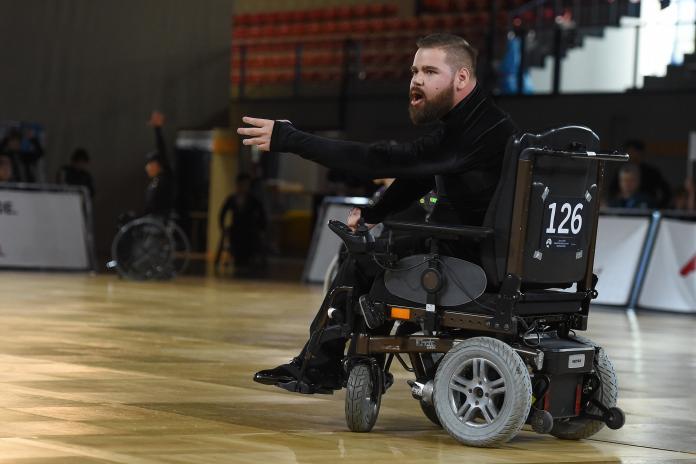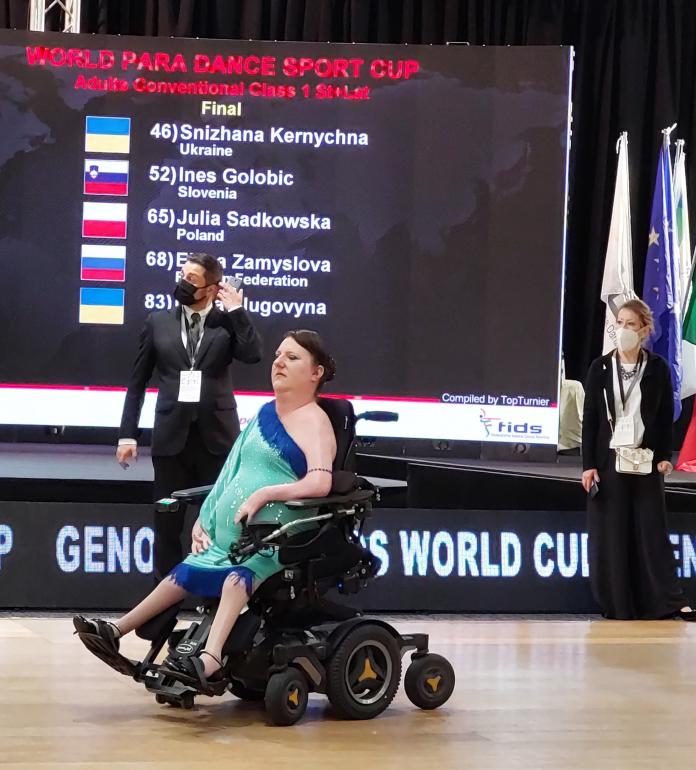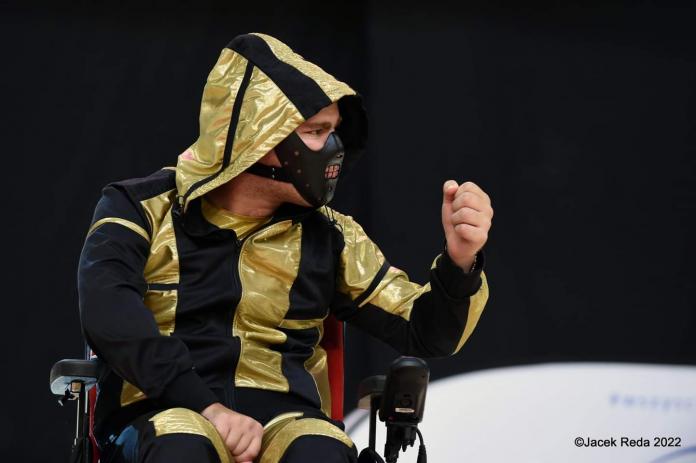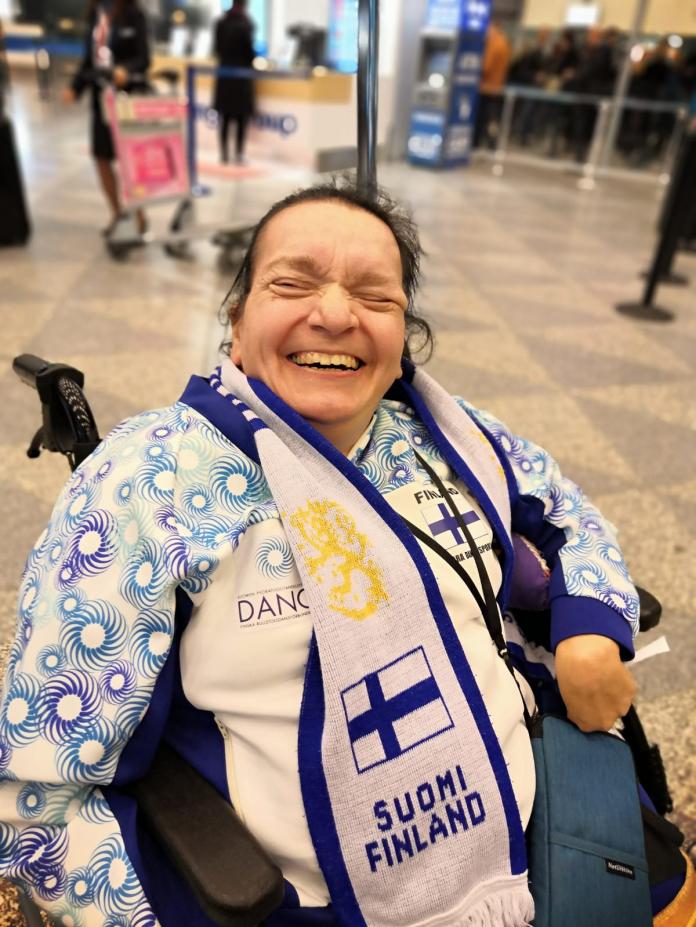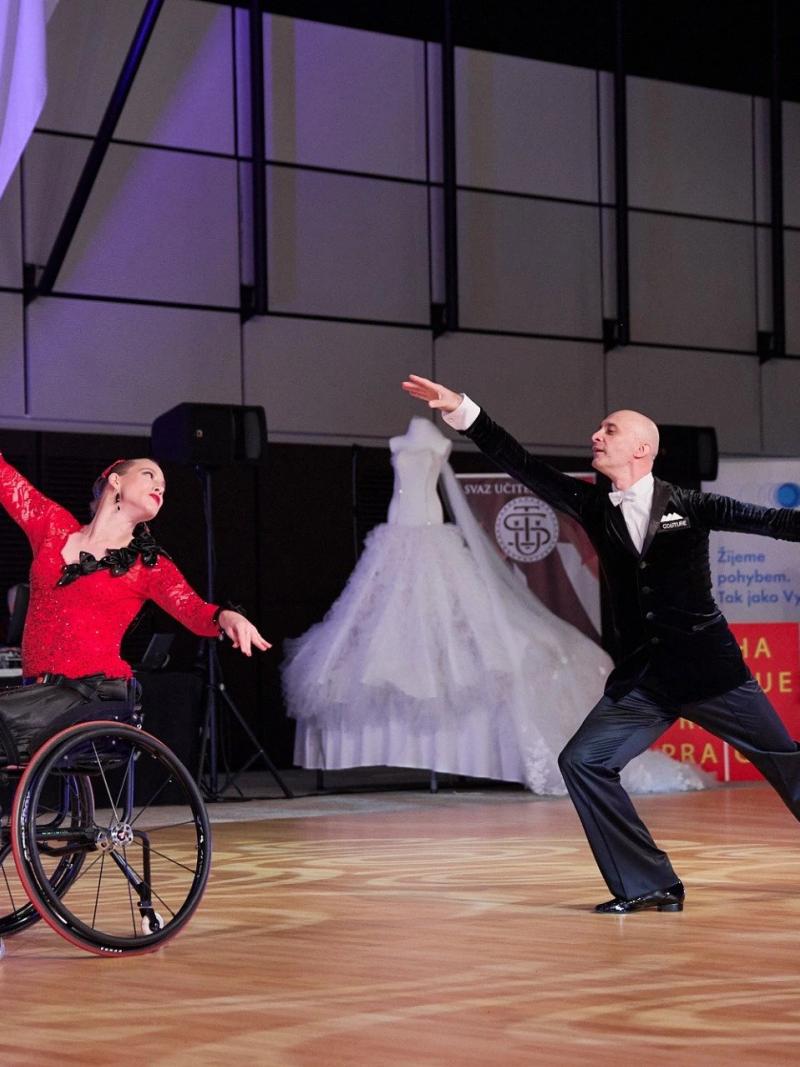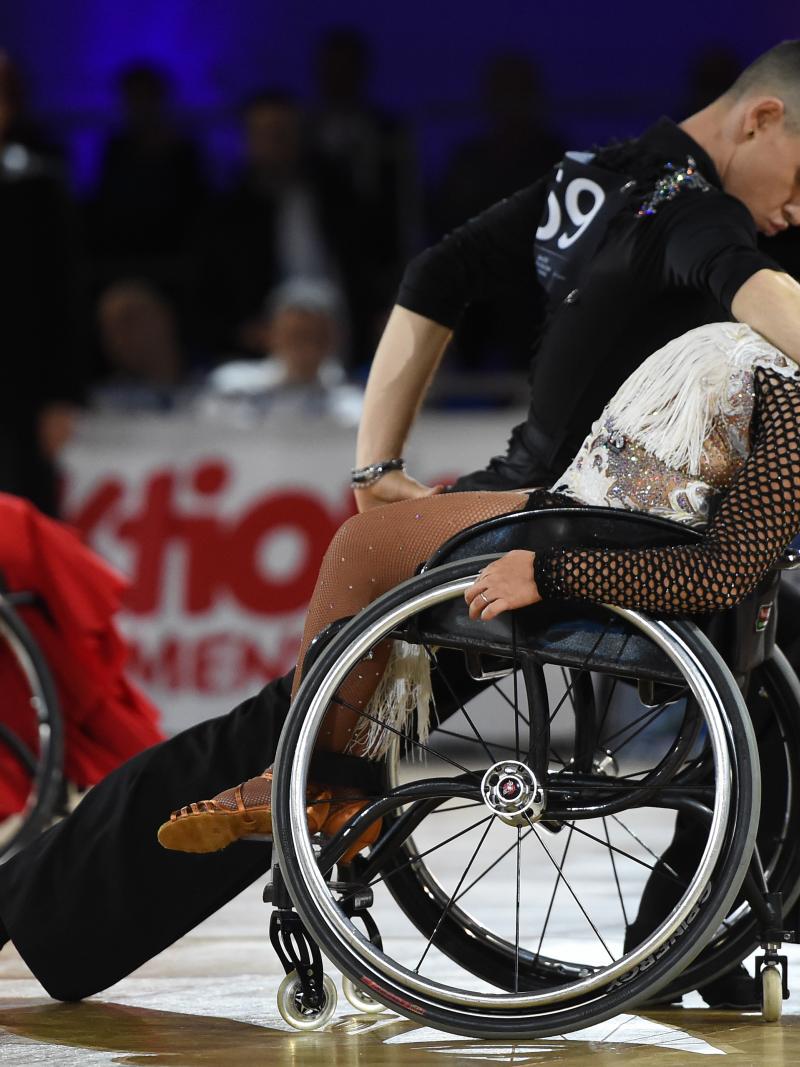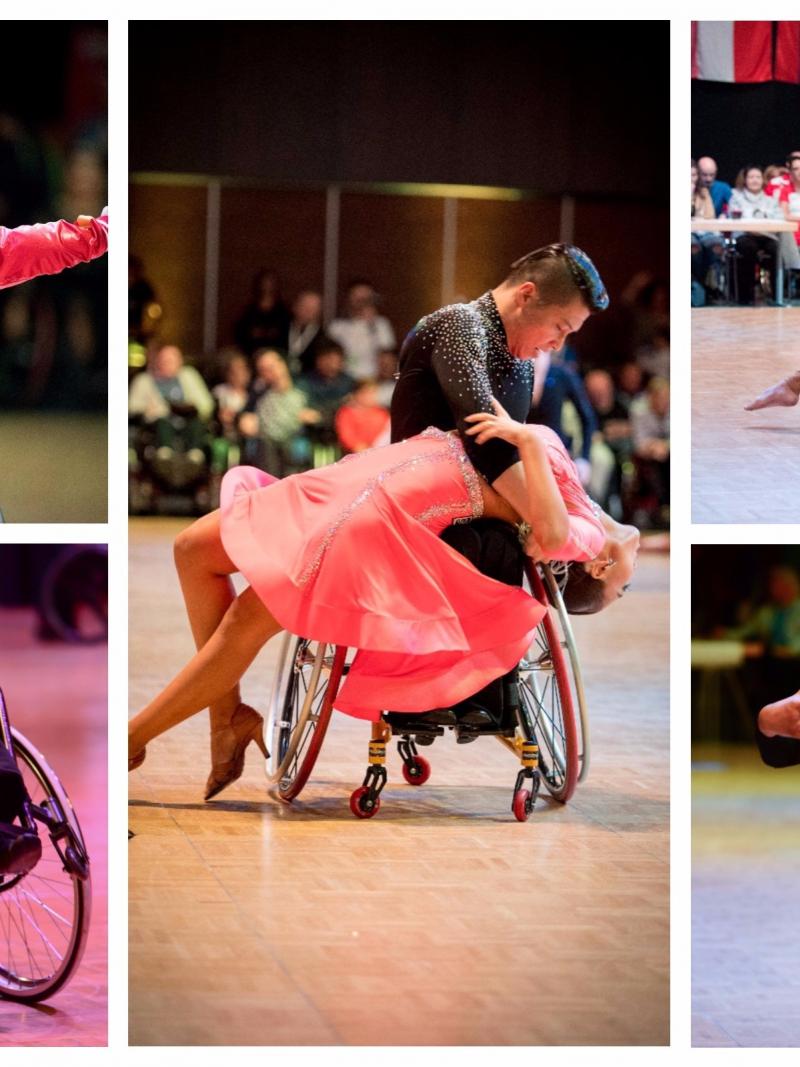'X factor' helps dancers in electric wheelchairs overcome unique challenges
Four dancers in electric wheelchairs are taking part in the Prague 2022 World Para Dance Sport European Championships from 28-30 October 28 Oct 2022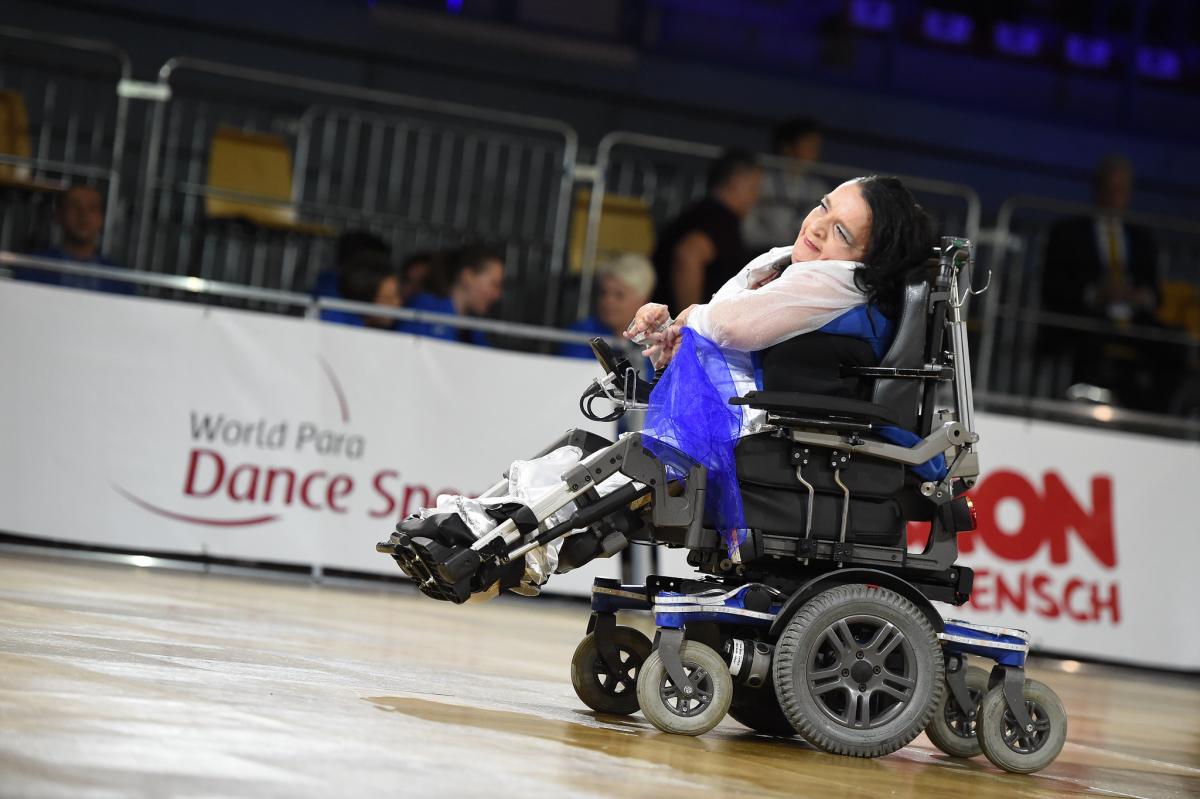
A dance was scheduled to celebrate graduation at Amir Alibabic’s high school and in the weeks ahead, the students were buzzing with excitement.
Alibabic, however, struggled to share that enthusiasm. Having suffered a stroke at age six, which paralysed half of his body and led to him using an electric wheelchair, how would he take part in this coming-of-age event?
The solution that he ultimately came up with not only allowed Alibabic to join the high school celebration, but also determined the course of his life over the following years.
“We had special (dance) lessons for the prom night and because I couldn’t dance in the formation, they asked me, ‘Do you want to have a solo performance with the dance teacher?’ And when I finished my studies, I would go with this dance teacher and we would have lessons,” Alibabic said.
“I didn’t dance with all the other students, but the coach and I, we made a special dance for two or three minutes. We made some combination of samba, and we danced. That was my first time to dance, at my prom, and when I got to the university in 2015, I decided that dancing is my thing.”
Fast-forward seven years and Alibabic is a world silver medallist taking to the dance floor at the 2022 World Para Dance Sport European Championships, which are held in Prague, Czech Republic from 28-30 October.
Alibabic is one of four dancers at Prague 2022 who are competing in electric wheelchairs, together with his Slovenian teammate Ines Golobic, Finland’s Pirjo Pappila and Belgium's Kim Vandersteen.
Since their group is still small, in most competitions the Para dancers in electric wheelchairs compete alongside those in manual wheelchairs. However, the athletes are optimistic that these numbers can grow as more electric wheelchair users discover the magic of the sport.
“Although there are very few of us who dance with an electric wheelchair out of the total number of dancers, there are surprisingly many of us on a global level,” Pappila said.
“It is very important that such a smaller group is also taken into account equally, because of the physical, mental and participation effects of dance, in addition to the immense joy everyone has the right to experience,” she added. “I want to encourage electric wheelchair users to at least try this wonderful sport, which gives me the opportunity to have a really amazing life.”
Emotional getaway
A power wheelchair user since her childhood, Golobic says she relies on the help of others for many tasks in her daily life. To express how that feels, she decided not to say it, but to dance it.
“I’ll be your clown behind the glass, go ‘head and laugh ‘cause it’s funny” … Emeli Sande’s melancholic “Clown” sounds over the speakers as Golobic turns and swirls on the Prague dance floor. Even talking about the song, which Golobic has chosen for her freestyle routine, makes the dancer emotional.
“It has a meaning behind it. At least, for me. I found myself in that song, so I decided to show it to my coach and he said, ‘OK’. I was very shy the first time that I showed it to him,” Golobic said.
“I am dependent. I depend a lot on other people because I cannot take care of myself - basic stuff, like getting up, dressing myself,” she explained. ‘The ‘Clown’ is like ‘Here, I’m going to entertain you. I’m going to give you my last trick and I hope I’m going to be fine, I’m going to be interesting, and I hope you’re going to be happier coming to this job, taking care of me’.”
Often reserved about her feelings, Golobic is able to express herself freely when dancing.
“I love dancing because when I’m training, I’m only thinking about the steps and the music and usually all those things of the everyday that happen, they go away,” said Golobic, who took up dance after her high school prom like Alibabic, more than a decade ago. “It’s a little bit of a getaway from everyday life.”
This is a feeling her teammate knows all too well.
“When I’m on the dance floor, it’s like some kind of a bubble. I’m isolated in this bubble from the world,” Alibabic said. “I don’t know what is happening around me. I’m just on the dance floor, I’m being myself, showing my real emotions.”
One beat ahead
While they often share the dance floor with manual wheelchair dancers, including at the 2022 European Championships, dancers in electric wheelchairs note that their equipment comes with a unique set of challenges.
Aside from everyday trials like having to find sockets and manoeuvring around small spaces, the athletes need to adapt to the technical limitations of their chairs.
For example, an electric wheelchair has an inbuilt safety delay from the moment its user touches the joystick to the moment when the chair moves. While this is not an issue in a daily life setting, these small delays can impede the flow of a dance. A drained battery poses an additional challenge as it can slow down the chair significantly.
To counter these delays, dancers have to move the joystick ahead of the beat just to stay on pace with the music.
“My first wheelchair for dancing was so slow, I had to really remember my choreography because I had to know in advance what move I’m going to make,” Golobic said.
“That’s one of the biggest differences when it comes to power wheelchairs. You have to do a lot. First you have to think of the choreography, then you have to think when to move your hands, then you have to know when to move your body and usually when you move your body, your hand goes with it and maybe it's not on time with the wheelchair, so it’s difficult. It’s not that easy. Maybe I’m biased, but I think that the dancers with the usual wheelchairs have a slightly easier job than us.”
The flow of the dance can also be broken when the dancer takes their hand off the joystick. Unlike a manual wheelchair, which can stay in motion even when the athlete raises their hands, electric wheelchairs come to a full stop.
For Alibabic, this is a particularly salient issue as he is unable to move the right side of his body, so he cannot swap the hand he uses to control the joystick.
“When you push yourself on a regular wheelchair, you release your hand and your wheelchair is driving you,” he explained. “When I put my hand off the joystick, my wheelchair stops. Because I have only one functional hand, I’m very limited.”
A class of their own
Despite the various challenges that dancers in electric wheelchairs face, their talent can transcend barriers and make a strong statement.
Alibabic proved this in 2017 when he took a silver medal in the men’s single freestyle class 1 at the World Para Dance Sport World Championships in Malle, Belgium, competing against manual wheelchair users.
“When I went on the dance floor, I really gave everything of myself and I just know, the judges saw something in me. They said it was mostly to do with my charisma and my presence because I gave this really good energy,” Alibabic said. “When I come to the dance floor, I try to encompass all the feeling of dancing, not only the physical (side) because I’m not strong on my physical level. I’m stronger on my emotional level and I’m stronger on my musicality, and this is dancing for me because I’m don’t want to be a robot. I want to be a dancer.
“Great dancers are really physical, but the best dancers have this special factor, factor X, which you cannot get with only the physical training. This is something you have or you don’t have. There are a lot of good dancers which are not so physical because of their disability, but they have more of this X factor, like me.”
Finnish dancer Pappila also does not shy away from showing her emotions during performances.
“Dancing is like painting a watercolour painting,” she said. “One of the most important things in each of my performances is to dance with presence and as my authentic self. That's why, for example, each of my waltzes is different, as I try to ‘paint’ a picture of my feelings, which the playing music awakens inside me, and of course I hope that the audience and the judges can see all the colours and emotions that I 'paint' on that canvas with my dance.
“I'm a really emotional athlete and I'm not afraid to show genuine emotions. For example, when my dear mother died at the beginning of February, it took me three months before I could dance a single dance, and even then, very often during the waltz, tears would flow down my cheeks.”
While dancers in electric wheelchairs are competitive with those in manual wheelchairs, Pappila hopes more people like her will take up the sport so that every competition has a separate category for them.
“If we had our own category, it would increase the interest in our sport for those who are already starting the dance path,” she said. “There are indeed many people who use electric wheelchairs for various reasons. You should find only those people who like dancing among them.”
Overcoming fear
The lack of a separate class is what keeps some electric wheelchair users out of the sport.
Alibabic said he knows many Para dancers who have competed at lower-level events, such as the Holland Dance Spectacle, but are afraid of advancing to higher-level competitions where they will face dancers in manual wheelchairs. He also insists that it is necessary for electric wheelchair users to overcome this fear.
“You must be strong. You must be free, you must always have your goal in front of your eyes and you mustn’t let anybody stop you on your way,” he said. “Most of the time, we are focusing too much on the opinions of other people, like ‘You cannot do this, you cannot do that’. Try it, be strong, have the will, and you will see where you are.”
As someone who has had to overcome fear to start dancing, Golobic shares a similar message.
“They should definitely try, they should. Because it’s fun. It’s really fun. I used to be a little girl who thought that she could never dance, and now I am competing,” she said. “And of course, the more people dance, the better chances are that we’ll get our category.”
Vandersteen from Belgium is the fourth dancer showing her skills on the dance floor with the electric wheelchair.

 Facebook
Facebook
 Instagram
Instagram
 Twitter
Twitter
 Youtube
Youtube

